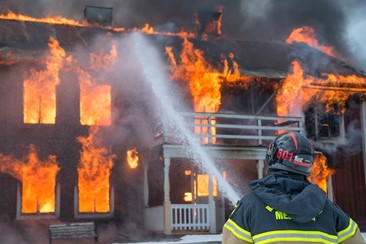The worst thing to happen during an emergency is panic. In the face of a life-threatening situation, panic makes the loss of life, property, and money even more likely.
Whereas prepared personnel make the most of the critical initial minutes of an emergency. A prompt warning to evacuate, a call to emergency services, and guiding evacuees towards the nearest exits can all be done competently with adequate preparation.
Devin Doyle of Newport Beach says that one of the most common hazards a business can face is fire. The National Fire Protection Association tallies that in 2021, fires caused 3,900 civilian deaths, 14,700 civilian injuries, $15.9 billion in property damage.
To prevent or minimize the threat of a fire, let’s go through the steps in developing an emergency response plan for fire preparedness:
Review Performance Objectives
Performance objectives include: quicker evacuation time, personnel familiarity with emergency procedures, or minimizing property damage.
Review Hazard or Threat Scenarios
Look for vulnerabilities that make an asset more susceptible to a fire hazard, then go through what could be done to mitigate it.
For instance, cooking was the leading cause of nonresidential fires from 2012 to 2021. Armed with that knowledge, reducing the hazard by banning cooking, or increasing safety with a dedicated kitchen fire extinguisher are viable solutions.
Assess the Availability and Capabilities of Resources
The plan should assign fire evacuation teams, detail needed equipment like megaphones and respirators, and outline procedures in the event of a fire.
A fire evacuation team is a group with tasks specific for a fire emergency – fire wardens, route guides, and floor monitors as roles for the team.
Talk with Emergency Services
Discuss with emergency services their response time to the premises. Knowing when support from first responders will arrive is crucial for coordinating efforts during an emergency.
Determine if There are Any Regulations Pertaining to Emergency Planning
Ensure that the emergency response plan complies with all applicable regulations. For example, some industries may have specific requirements for handling hazardous materials.
Develop Protective Actions for Life Safety
Evacuation routes should be clearly marked and communicated, with fire evacuation teams ready to assist during the emergency.
Develop Hazard and Threat-Specific Emergency Procedures
These are actions to be taken during an emergency, such as calling emergency services, activating alarm systems, and mobilizing the fire evacuation team.

Coordinate Emergency Planning with Emergency Services
Share relevant information about the building’s hazards, layout, and emergency protocols. For instance, floor plans and hazardous material inventories can aid the efforts of the first responders.
Train Personnel
Training for the fire evacuation team should cover evacuation procedures, the use of emergency equipment, and emergency protocols. Regular training sessions are essential to maintain preparedness.
Practice the Plan
Drills can help identify strengths and weaknesses in the plan, where personnel practice their roles in a simulated emergency. After each exercise, discuss lessons learned and areas for improvement.
With these steps, commercial building owners can develop an emergency response plan to ensure the tenants’ safety and minimize the crippling effect of fire emergencies on the building and its operations.

